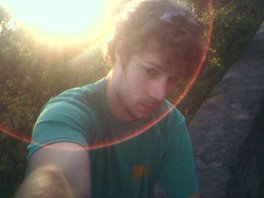Radon Safety Levels Revamped; TheTrouble With (Great Lakes) Tritium
Naturally-occurring but deadly, radon is a radioactive, odourless & invisible gas which boosts the risk of lung cancer in humans. It leaches from the soil and rocks, and can collect in basements and foundations. Radon is believed to be implicated in lung cancer occurring in non-smokers who avoid lung cancer hazards. This month, Health Canada introduced new & improved safety guidelines for exposure to radon.
It used to be that remediation was required by law if exposure exceeded 800 becquerels. The new limit is 200 becquerels. The US limit is lower than Canada's, and set at 150 becquerels. A becquerel is a measurement of radiation.
Tritium is a radioactive form of hydrogen, and so can binds readily with water and organic matter and therefore easily become embedded in living tissues. From there it can harm nearby cells. Some experts are concerned about this. Others believe that radon which emits larger particles as it decays, is more of a worry.
Here is a paper reviewing the toxicity of tritium.
This month, Greenpeace released a study on the tritium being released from Ontario Hydro's Candu nuclear reactors located on the Great Lakes. Tritium is a radioactive form of hydrogen. Canada's safety standard for tritium is 7,000 Bequerels/Liter. A 1994 Ontario government committee recommeded that the guideline be changed to 100 Bq/l, and decreased over a 5-year period to 20 Bq/l. So far the limit has stayed the same.
This is not unprecedented - here is an earlier Energy Probe study of toxicity of tritium and risk of exposure in the Great Lakes area.
Candu reactors are among the world's largest sources of of the radioactive compound. They can produce up to hundreds of times more tritium than other kinds of fission reactors.
The issue appears to be split down the middle - Greenpeace's report says high amounts of tritium in the Great Lakes and around nuclear stations indicate the energy plants regularly emit it into the environment. Energy Probe's earlier report, above, pointed to tritium as problematic. Meanwhile, Canadian federal and provincial energy regulators claim it is not a danger at lower levels. They say radon is more of a worry as it is more toxic at lower doses than is tritium.
The study's author is radiation biologist, Dr. Ian Fairlie. Fairlie says that Ontario has some of the highest levels of tritium in the environment in the world. Fairlie worked on CERRIE (Committee Examining Radiation Risks of Internal Emmitters), a British government committee that reviewed the safety of a number of radioactive substances, including tritium. He also authored a peer-reviewed journal article this year which concluded that the hazards of tritium are underestimated.


